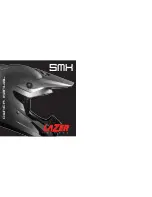
Lithium-ion battery
8-3
1
2
3
4
5
6
7
8
9
10
11
12
13
where it may get wet as this
could cause short circuits.
Avoiding electric shock or fire while
handling the lithium-ion battery
WARNING
EWA22031
Do not sprinkle water onto the
lithium-ion battery or drop it in
water.
Exposing the lithium-ion battery
to water could cause an electri-
cal shock. If it is dropped in wa-
ter, it will become permanently
useless.
Do not dispose of the lithi-
um-ion battery in a fire.
If the lithium-ion battery is
thrown in a fire, it could ex-
plode. Return used batteries to
a Yamaha dealer for proper re-
cycling.
Do not disassemble the lithi-
um-ion battery.
Disassembling batteries is like-
ly to cause electric shock or fire.
Do not drop the lithium-ion bat-
tery or expose it to strong
shocks.
The lithium-ion battery could be
damaged or break. Avoid sub-
jecting the lithium-ion battery to
strong impacts or repetitive
shocks during transport. This
could lead to an electric shock
or fire.
Do not use a damaged lithi-
um-ion battery.
If a lithium-ion battery has been
dropped or damaged due to im-
pact, do NOT use it as there is a
risk of electric shock or fire.
Have a Yamaha dealer check the
lithium-ion battery before using
it again.
EAU96454
Charging the lithium-ion
battery
Appropriate charging environ-
ments
For safe and efficient charging, charge
the lithium-ion battery in a location that
is:
Flat and stable
Free of rain or moisture
Out of direct sunlight
Well-ventilated and dry
Not accessible to children or pets
Temperature between 15–25
C
(59–77
F)
Inappropriate charging environ-
ments and solutions
The hot and cold environments de-
scribed below can cause charging to
enter standby or suspension without
fully charging the lithium-ion battery.
Summertime charging standby/
suspension
If charging in a location receiving direct
summer sunlight or immediately after
riding, the lithium-ion battery might en-
BFM-F8199-E0.book 3 ページ 2022年2月4日 金曜日 午後4時11分
















































